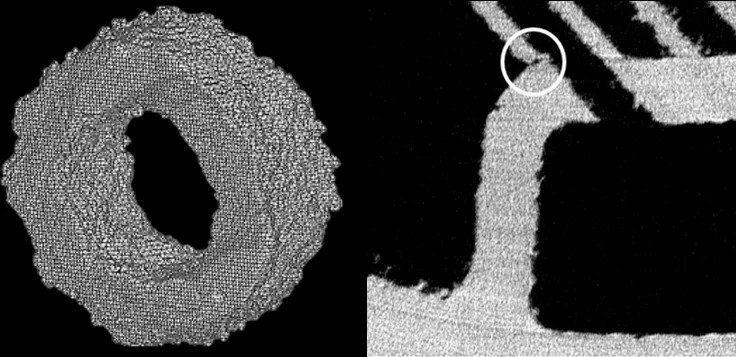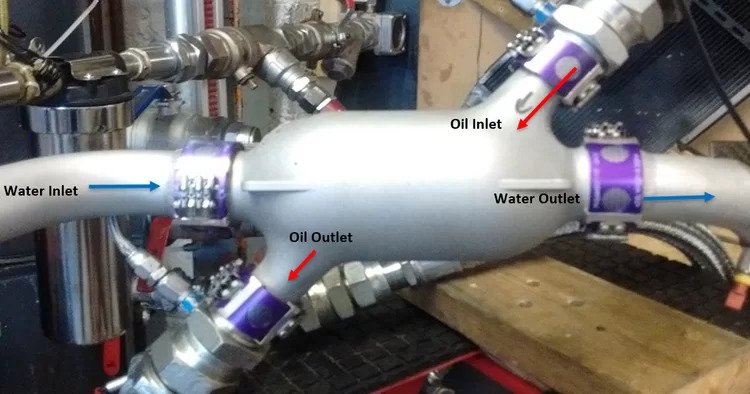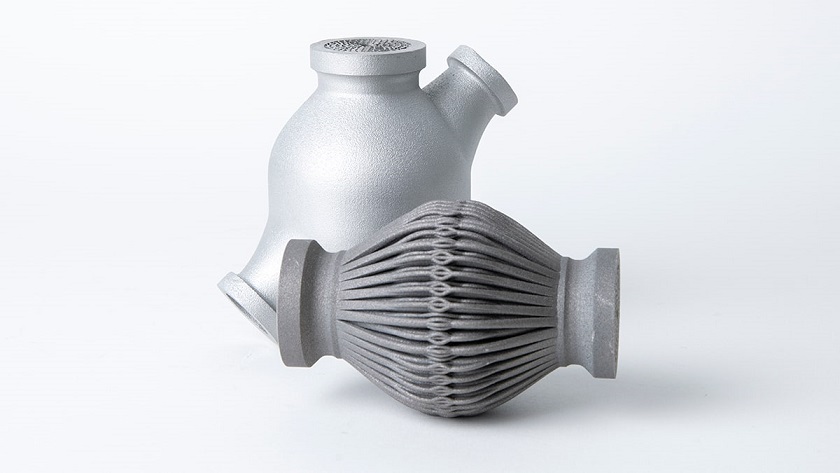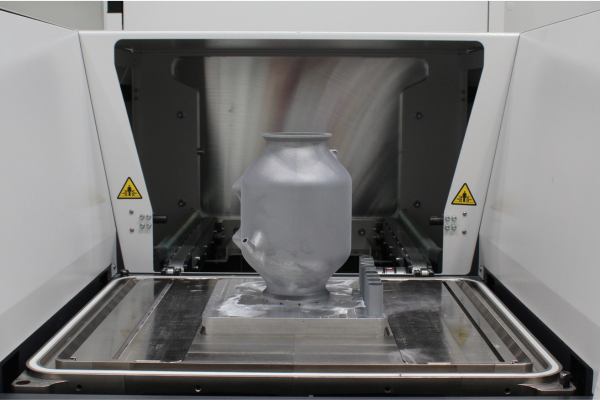We delve into the intricacies surrounding the qualification and certification of 3D printed heat exchangers, exploring both the challenges and opportunities inherent in this evolving field. Within the expansive realm of metal additive manufacturing (AM), a vibrant discourse is underway, with professionals engaging in dynamic conversations about the rigorous processes involved in qualifying and certifying these innovative components.
Qualification and Certification: What is the difference?
Qualification provides the foundation of certification activities. In the context of AM, qualification would involve validating the design data, material and production process of a part to confirm the final output is capable of meeting a broad range of performance requirements. For qualification activities relating to the part itself, this helps form the basis of any functional tests that will be carried out when the part is released for series production.
Certification is the subsequent step of proof that the results observed in qualification meet the requirements of a recognized industry or regulatory standard (whether that be for the part or process). For example the standard AMS7003 establishes controls for the repeatable production of aerospace parts using Laser Powder Bed Fusion (LPBF) techniques. For a part that is going to be fitted directly onto an aircraft, certification by the type certificate holder for that particular aircraft model would also need to be granted – as confirmation that the part being integrated is compatible with overall performance requirements of the aircraft.
“The difference between the two is qualification is something that you do like to validate the product actually works and meets the performance requirements. Whereas certification is when you claim compliance with a certain known standard.
Typically, from my experience working in Aerospace, you would go through a qualification process first, where you basically expose the part to all the elements, and push the part to near (or even full) destruction, but then on the back of that you have a substantial amount of data that would prove the reliability and safety of the product, leading you to certification,” shares Andrew Milner, Quality Manager at Conflux Technology
Qualification Assurance at Conflux Technology
An effective Quality Management System is a key enabler for much of the above, ensuring there is an appropriate standard of organisational governance in place with regards to Quality Assurance, and there are sufficient controls deployed at an operational level to maintain consistency of approach - supported by verifiable records where necessary. The Quality Management System of Conflux Technology is independently certified to AS9100D by an accredited certification body.
What is AS9100D Certification?
The AS9100D standard specifies the Quality Management System requirements for organizations that design, develop or manufacture aviation, space, and defense products. The AS9100 standard is an SAE document developed by the International Aerospace Quality Group (IAQG). The IAQG is comprised of representatives from Europe, the Asia Pacific region and the Americas. The standard is acknowledged worldwide. While some countries utilize various numbering practices the standard remains the same around the world.
The AS9100 includes not only the ISO 9001:2015 requirements, but also identifies additional requirements specifically for the aviation, space and defense industries. Some of the changes to Revision D of the AS9100 standard include the addition of information regarding the handling of counterfeit parts, attention to the human factors of manufacturing quality, a focus on product safety, ethics training, and the process approach including SIPOC and PDCA tools, Risk Based Thinking, and monitoring supplier delivery performance.
Qualification and Certification in Additive Manufacturing
In the Additive Manufacturing world this means that the whole AM process flow including the system/platform, process and material need to be qualified to a certain level to produce certified parts that meet standards, design specifications and end use performance targets.
Heat exchangers have been used in engineering systems since the industrial revolution. This means that there is a high level of confidence associated with the performance and reliability of traditionally manufactured heat exchangers. This is naturally driven from the maturity of the manufacturing processes and supporting data that are available in the public domain. In contrast, AM is less mature and there is a lot more qualification data required to support and speed up the certification process.
At Conflux we work across a range of market verticals - Automotive, Aerospace, Defence, Energy, Industrial Microelectronics, Motorsports, Oil and Gas- some of which are more heavily regulated than others. However, one thing remains constant across all our applications; that a single critical defect/pin hole in a single thin wall gas tight structure can be the difference between success or failure.

Important considerations for certifying additive manufactured parts
The finer details and requirements for part certification are often clear as this is driven by industry specific standards that already exist in many instances. In contrast to this, knowledge is still constantly being developed in relation to the qualification of AM in general. Equipment OEM’s have varying approaches to addressing the surrounding topics and it is not uncommon for end users to develop and implement their own qualification processes and standards. This remains true at Conflux as we are one of few companies that are pioneering in the space of AM heat exchangers.
How do we provide our customers with confidence in Additive Manufacturing?
Common questions arise from customers in relation to the qualification of the AM process. Having successfully delivered AM heat exchange solutions across both heavily and less regulated industries, we are now in a position where we have answers (but not all of them of course).
Stability and repeatability
We often get asked "Is AM a stable and repeatable manufacturing method?" And the answer is: Yes, with the right approach. At Conflux, we have an expert additive manufacturing team. Our manufacturing philosophy considers AM in a holistic manner. We leave no stone unturned and have our own proof that it is often the small things that make a huge difference to the outcome. We have developed and implemented carefully considered and robust process controls. This, when coupled with a geometry specific approach to manufacturing, ensures that we always provide our customers with the best chances of success.
Our unique use of CT Scanning - an essential validation tool
CT scanning is quite widely used in AM research, and is commonly used in traditionally manufactured heat exchange companies. But it is uncommon in additive manufacturing. The main reason is because it is expensive and produces a vast amount of post-processing data, which is time consuming to analyse. Conflux Technology makes use of CT scanning as part of our process, which as far as we know is completely unique in the AM field. We use CT scanning as an essential validation tool to inform and speed up our development cycles, it also provides our customers with early confidence that their parts are free of powder and critical defects.
R&D is in our DNA as thermal technology pioneers. We developed the use of CT scanning as part of our methodology by drawing from our research methods, adopting them in our commercial work and passing these benefits on to our customers. We developed our own data management tool called Conflux Quantify. Identifying a critical defect in a complex AM heat exchanger can be likened to trying to find a needle in a haystack, and our proprietary software has given us the tool to automate this process and develop smarter, more technologically advanced heat exchangers as a result.

CT scanning also enables us to characterise and investigate phenomena that are related to the as built surface finish of AM heat exchange structures. We use reconstructed tomography data to improve the accuracy of our predicted performance and understand the end use implications.
“We’re dedicated to getting to knowing what’s in our parts. We’re not satisfied unless we know what we're sending out to customers. That's why we use this technology.” Dr Ian Fordyce, AM Engineer, Conflux Technology
Testing in Additive Manufacturing: Test, test and test some more
Simulation in the form of Computational Fluid Dynamics (CFD) and Finite Element Analysis (FEA) is a crucial tool for AM heat exchanger development. However, there is no replacement for testing and the importance of empirical data remains critical for the certification of AM heat exchangers. Our in depth and robust development programmes employ a range of physical tests and generally consist of the following:
- Pressure and leak testing: where parts are subjected to specified proof pressures.
- Calorimetric testing: to determine performance characteristics such as heat rejection and pressure drop.
- Durability testing: pressure pulsation, thermal cycling, shock and vibration are performed to investigate durability and gain more statistical confidence.

Material Properties & Development
Our core focus at Conflux is centred around developing AM solutions to the thermal and fluid applications. Therefore, we do not class ourselves as a material development company. However, we do fully understand the importance that material properties have in the qualification process for AM technologies. Given this, we perform characterisation work that underpins our realisation of complex geometries. The results from such work enables us to extract the maximum performance from standard AM alloys, feed values into our FEA and CFD for improved simulated accuracy and provide our customers with confidence with regards to the bulk material properties of our products.
We also have multiple research projects currently underway, both in-house and in collaboration with world-class material research institutions like Deakin University, The Innovative Manufacturing CRC (IMCRC), Institute for Frontier Materials. Projects are focused on further enhancing the performance and lifespan of Conflux heat exchangers via novel alloy development, surface coating technologies and process parameter development. Such projects are aimed at improving outcomes for Conflux customers and are backed up by significant amounts of analytical data to quantify material and component properties that may require certification.
The future of Additive Manufacturing Quality Certification
AM is still a nascent technology for heat exchanger production and future of quality certification in additive manufacturing will depend on ongoing research, industry collaboration, and the development of best practices. It is also clear that qualification and certification are critical for increasing the adoption of AM heat exchangers as the technology advances. As additive manufacturing continues to gain acceptance in traditional industries such as aerospace, automotive, healthcare, and more, there will likely be an increased focus on developing and refining industry-specific standards.
For example the National Aerospace and Defence Contractors Accreditation Program (NADCAP) now includes a certifiable standard (AC7110/14) specifically for laser and electron beam powder bed fusion and there are many other product specific standards under development by various bodies such as ISO, ASME and ASTM that could be applied more broadly across other industries.
At Conflux we are enjoying being at the forefront of helping define this new era and are looking forward to working with customers who are open to new applications and excited to fully leverage the benefits of AM for highly complex thermal management problems.






